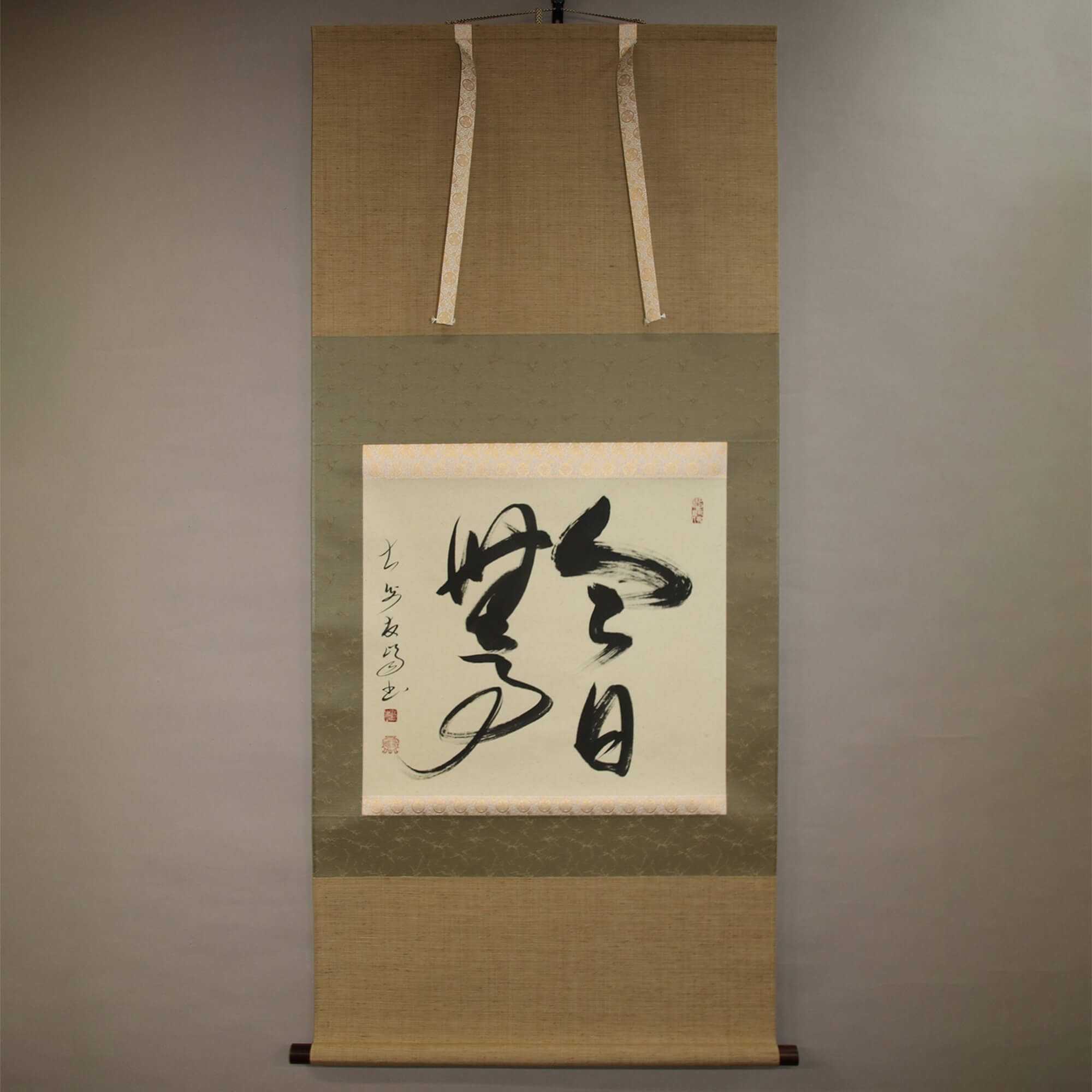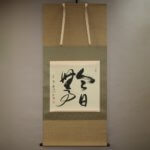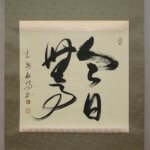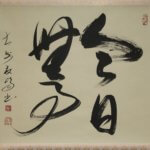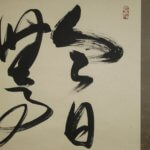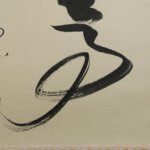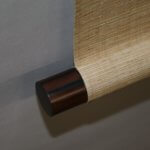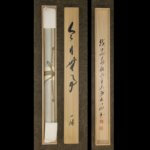Products Lineup
News / Blog
Other Menus
Kakejiku Hanging Scroll: Calligraphy : Today Is Peace and Tranquility with Nothing to Be Done / Takahashi Yūhō - Konnichi Buji
- Product ID
- 0267
- Name
- Takahashi Yūhō
- Profile
The chief priest at the Daianzen-ji temple in Fukui pref.
1948
Born in Fukui city, Japan
1970
Graduated from the Kyoto Hanazono University (Major: Buddhism)
Joined and practiced asceticism at the Kaisei-ji temple in Hyogo for 6 years1989
Appointed as the chief priest at the Daianzen-ji temple in Fukui
2008
Exhibition at the Takumi museum in JR Gifu Station
Exhibition at the art gallery in Inoue department in Nagano2011
Opened a gallery in the Daianzen-ji temple
Also appointed as the chief priest at the Housyou-ji temple in Ishikawa
Exhibition at the “Gallery Metanoia” in Paris, France2014
Performed at the Sarah Lawrence College in NY, USA
- Size
- 690mm x 1430mm
- Roller End Material
Red sandalwood- Material of the Work
- Japanese paper
- Price
- JPY 80,000
- Stock Condition
- In stock
- Payment: Click the Paypal Mark
- Duty and Taxes
Import duty and taxes are beyond our control and may apply to your shipment. Please noted that these fees are the responsibility of the buyer.
- Description
“Buji” refers to “safe” in the Japanese language today, while expanded to a slightly broader connotation of “peace and tranquility with nothing to be done” in Zen words. The phrase “Konnichi Buji” is wishing for peace in mind day after day. This work is written by a Zen monk Takahashi Yūhō in present with his hopes for peace in mind among everybody. In 2020, amid the global pandemic of coronavirus, many people were forced to live a life far from “peace in mind day after day.” Takahashi Yūhō, who wrote this piece, must be now hoping for everyone to get back to their usual lives to find peace in mind.

